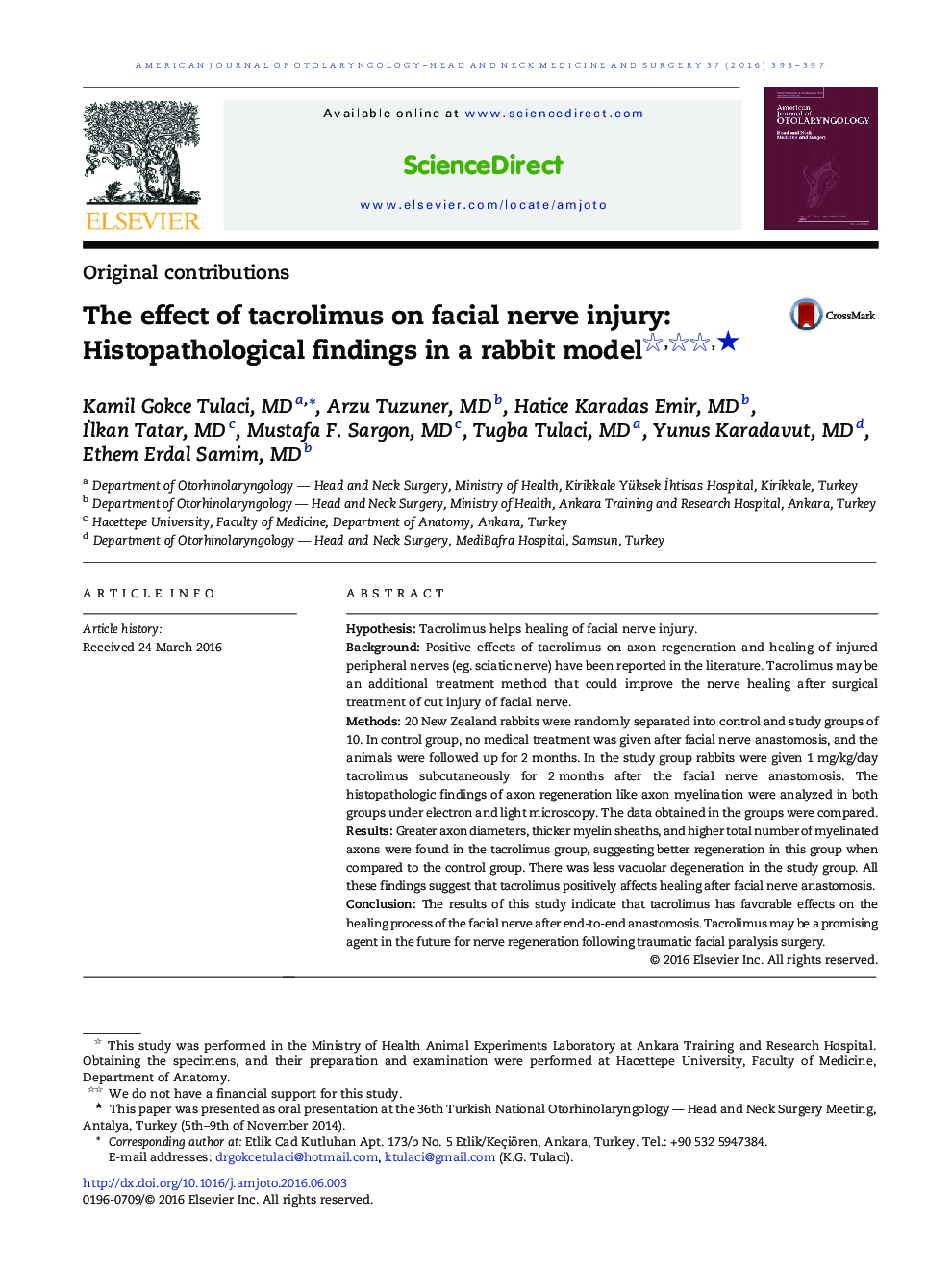| Article ID | Journal | Published Year | Pages | File Type |
|---|---|---|---|---|
| 4102888 | American Journal of Otolaryngology | 2016 | 5 Pages |
HypothesisTacrolimus helps healing of facial nerve injury.BackgroundPositive effects of tacrolimus on axon regeneration and healing of injured peripheral nerves (eg. sciatic nerve) have been reported in the literature. Tacrolimus may be an additional treatment method that could improve the nerve healing after surgical treatment of cut injury of facial nerve.Methods20 New Zealand rabbits were randomly separated into control and study groups of 10. In control group, no medical treatment was given after facial nerve anastomosis, and the animals were followed up for 2 months. In the study group rabbits were given 1 mg/kg/day tacrolimus subcutaneously for 2 months after the facial nerve anastomosis. The histopathologic findings of axon regeneration like axon myelination were analyzed in both groups under electron and light microscopy. The data obtained in the groups were compared.ResultsGreater axon diameters, thicker myelin sheaths, and higher total number of myelinated axons were found in the tacrolimus group, suggesting better regeneration in this group when compared to the control group. There was less vacuolar degeneration in the study group. All these findings suggest that tacrolimus positively affects healing after facial nerve anastomosis.ConclusionThe results of this study indicate that tacrolimus has favorable effects on the healing process of the facial nerve after end-to-end anastomosis. Tacrolimus may be a promising agent in the future for nerve regeneration following traumatic facial paralysis surgery.
